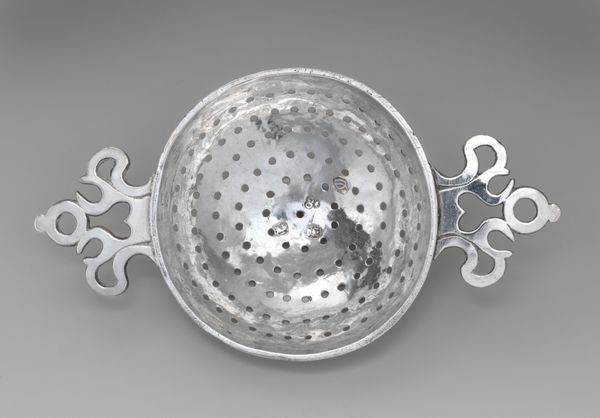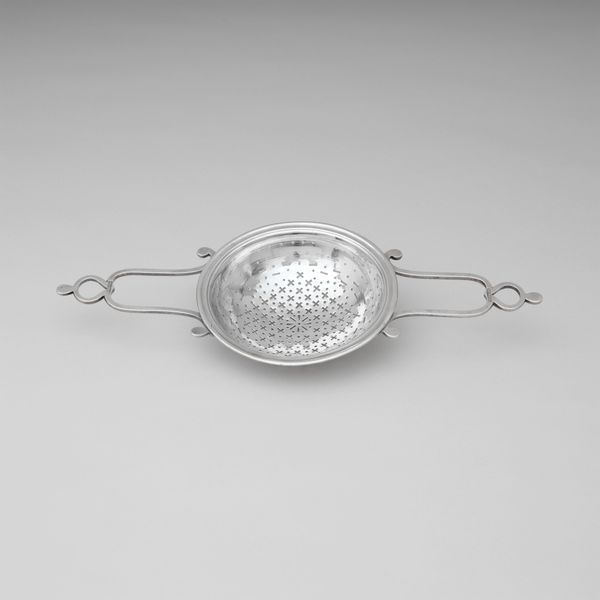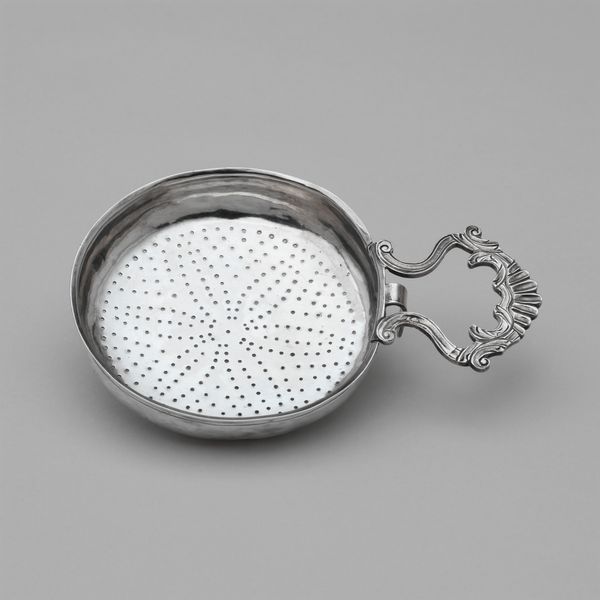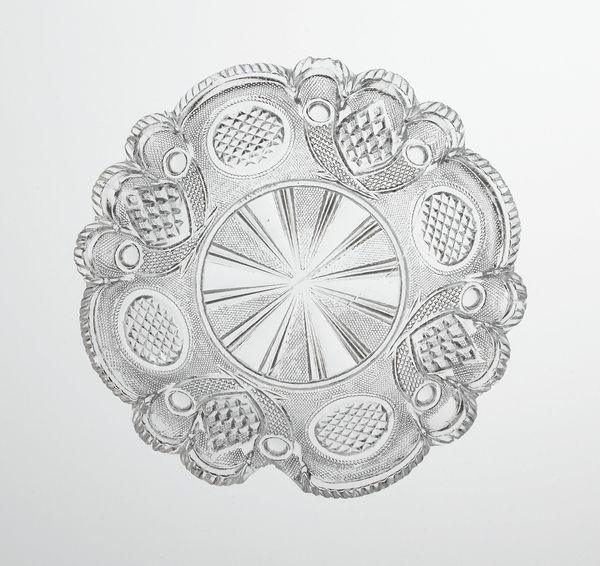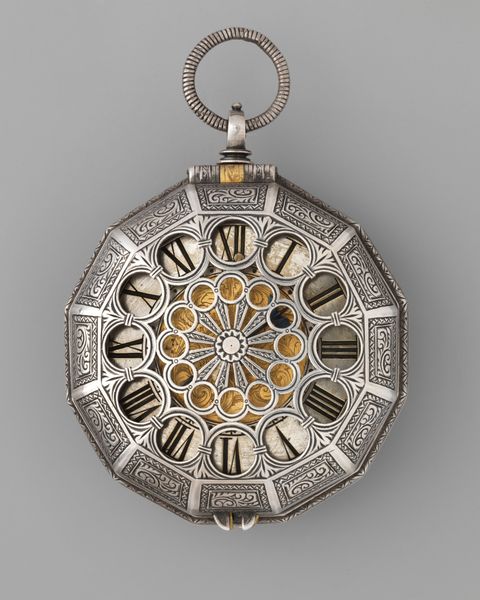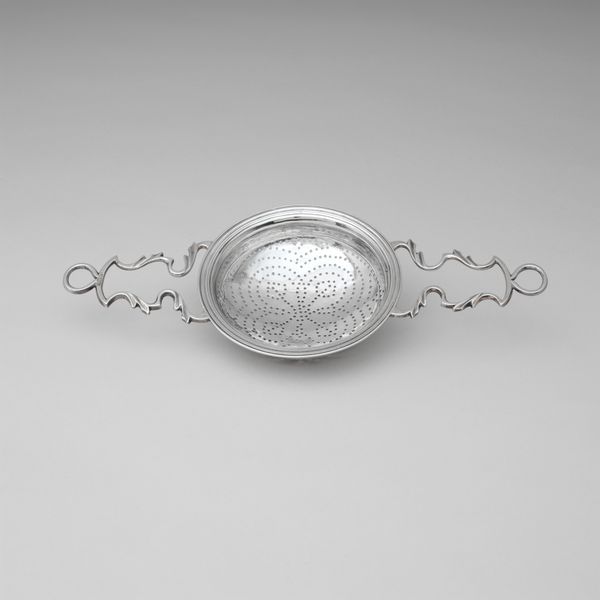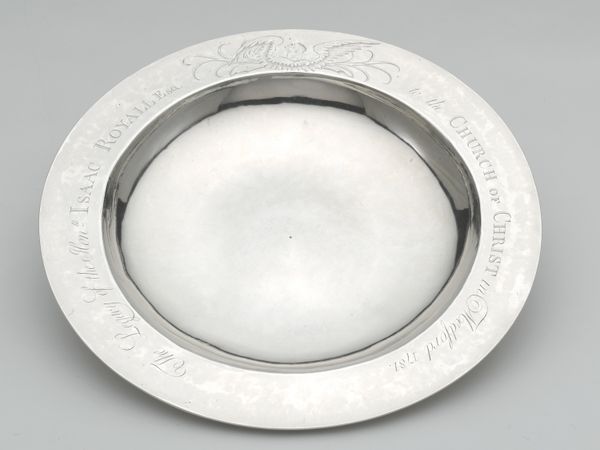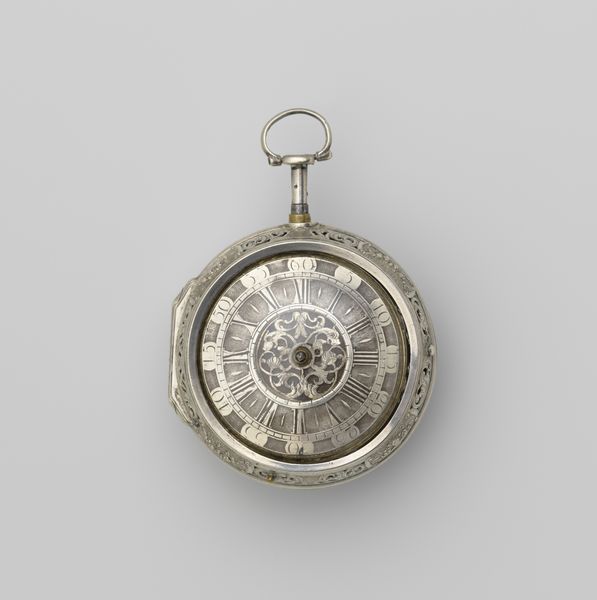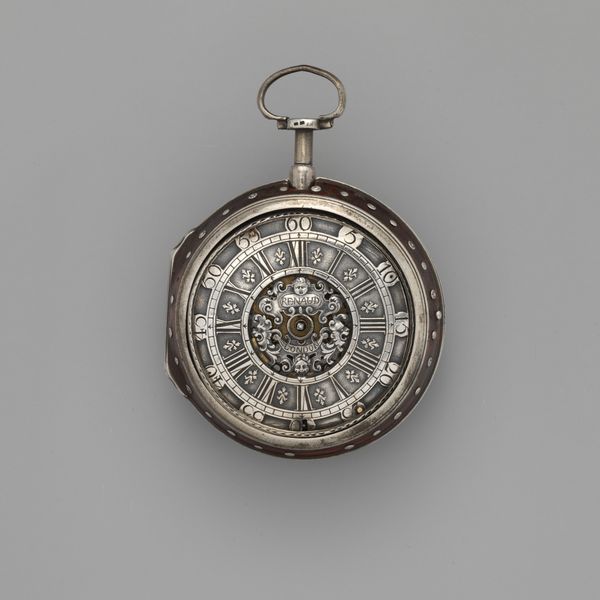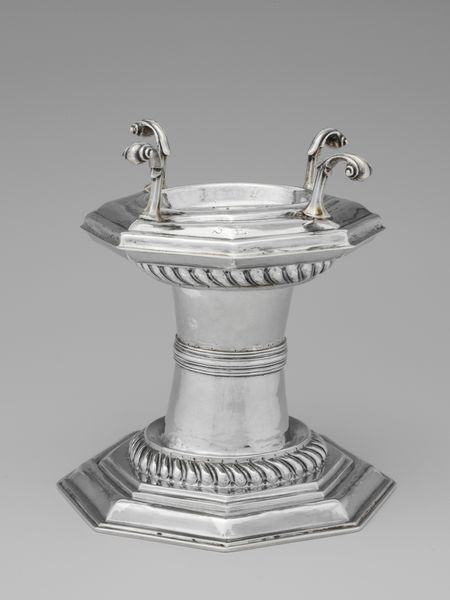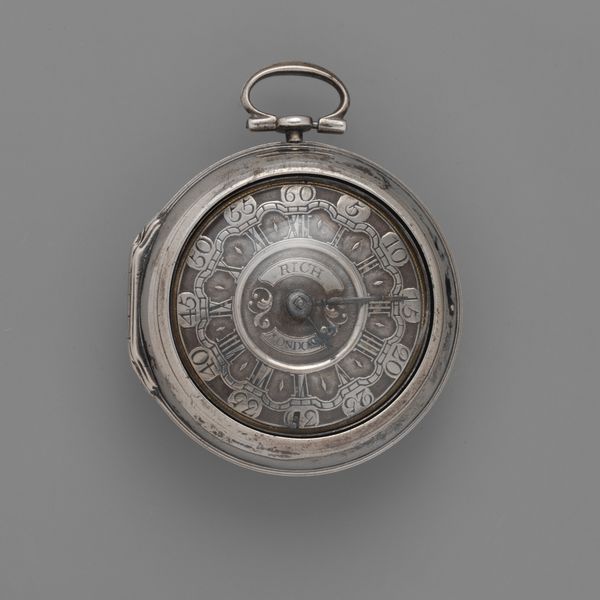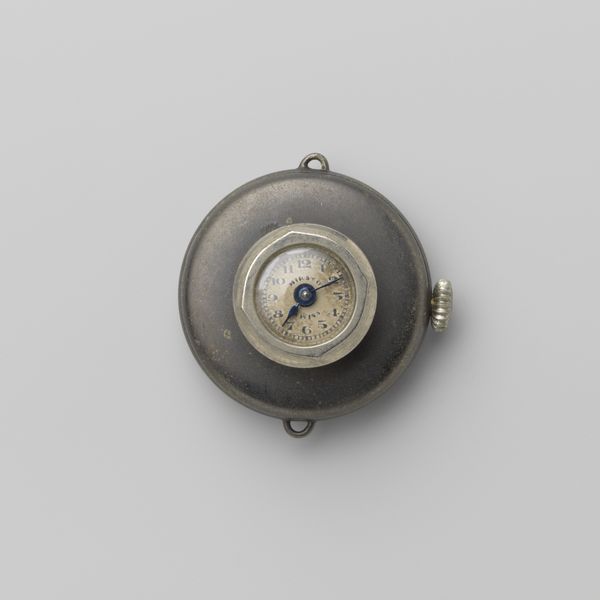
silver, metal, metalwork-silver, sculpture
#
silver
#
baroque
#
metal
#
metalwork-silver
#
sculpture
#
decorative-art
#
rococo
Dimensions: Overall: 1 1/8 × 6 3/4 in. (2.9 × 17.1 cm)
Copyright: Public Domain
This silver strainer was crafted in London, around 1737-38, by I. A. Look at the delicate floral patterns created by the perforations. These aren't merely decorative; they speak to a deeper cultural language. Floral motifs, like the ones here, recur throughout art history. From ancient Minoan frescoes to Renaissance tapestries, floral patterns evoke ideas of fertility, renewal, and the cyclical nature of life. But see how these are not flowers themselves? They are patterns, geometric abstractions. Even here, in the Enlightenment, nature had to be ordered, made rational. Consider the evolution of the rose, for instance. Once a symbol of earthly love, it later became a symbol of divine love in Christian iconography. Similarly, in the 18th century, the rose carried associations with luxury and refinement, reflecting the values of the aristocracy. The craftsman who created this strainer may have subconsciously drawn upon this vast reservoir of cultural memory, blending practicality with deeply ingrained symbolic associations. The result is more than just a kitchen utensil; it is a vessel of history, engaging our subconscious on a profound level. The past is never truly gone; it merely transforms, resurfacing in unexpected forms.
Comments
No comments
Be the first to comment and join the conversation on the ultimate creative platform.
